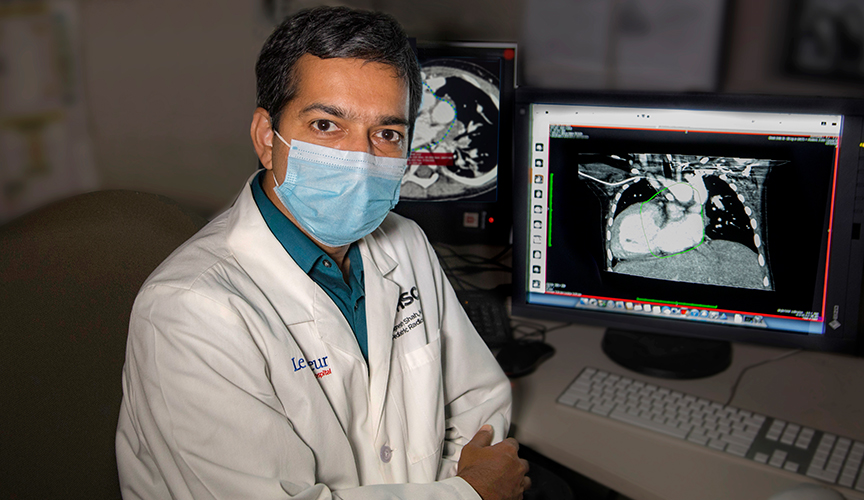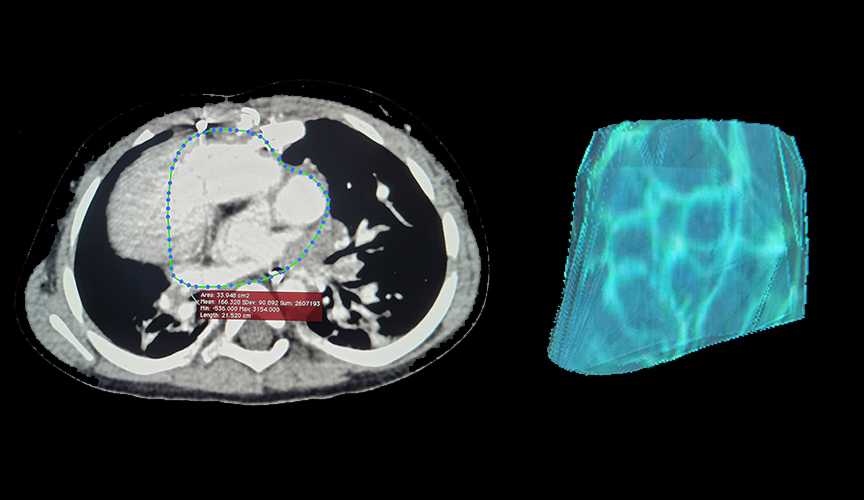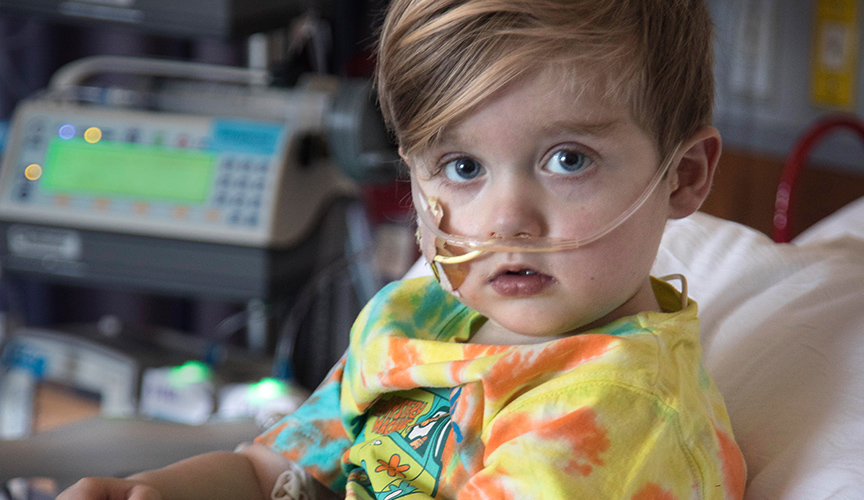The Perfect Match
In the last five years, Le Bonheur Radiologist Jignesh Shah, MD, has pioneered a novel imaging technique to match pediatric heart transplant recipients with donors. Using computed tomography (CT) volumetric analysis, Shah developed a methodology to improve donor weight selection in recipient patients awaiting complex pediatric heart transplantation.
Shah measured the volumes of the chest cavities of heart transplant recipients. He then measured the heart volumes of hundreds of patients who underwent CT scans for non-cardiac reasons and created a database of the correlation of total cardiac volume and the child’s weight. He utilizes this information to choose appropriate donor weight that corresponds with the recipient’s chest cavity volume.

Le Bonheur Radiologist Jignesh Shah, MD, has pioneered a novel imaging technique measuring the chest cavity volumes of transplant recipients and donors to successfully match heart size in 25 complex pediatric heart transplant surgeries to date.
This technique has been utilized for successful heart size matching in 25 complex pediatric heart transplant surgeries at Le Bonheur. In all cases, the donor hearts were perfectly compatible with the recipient’s chest cavity and inflow/outflow vascular connections.
Le Bonheur was one of the first hospitals in the world to use this technique and is now leading the way to establish Shah’s methodology as a standard of care for complex pediatric heart transplants. This has been particularly important for Heart Transplant Program Surgical Director Umar Boston, MD.
“Dr. Boston was in search of a more scientific way to evaluate patients on the heart transplant waiting list,” says Shah. “In the last five years, we’ve been able to develop this method into a standard of care in our heart transplant program.”
The new methodology can be most valuable in young infants with complex heart anatomy, such as dextrocardia (right-sided heart) where an accurate donor size is critical to avoid compression issues. Shah worked with Boston to develop a more accurate methodology that better predicts the size of donor best suited for Le Bonheur’s heart transplant recipients.
“This is a key indicator for donor selection,” says Shah. “It’s important to have accurate information for the surgeons, and it helps families to understand the care with which we match their child to a donor heart.”
Heart size matching has been helpful for the heart transplant to go smoothly and for postoperative success. Of the 25 patients matched using this technique, none have had instances of open chest immediately after surgery due to size mismatch. In partnership with heart transplant surgeons, Shah has been able to refine his technique and establish a methodology for heart transplant recipients.
Currently, Shah is representing Le Bonheur in the Advanced Cardiac Therapies Improving Outcomes Network (ACTION) size-matching project — a multi-institutional effort to help standardize the size matching methodology for heart transplantation.
A Heart for Lincoln
Lincoln Hopper, 3
Dyer, Tenn.
It was a long road to Lincoln Hopper’s heart transplant. But thanks to Le Bonheur Radiologist Jignesh Shah’s novel imaging technique to match him with the best donor, Lincoln received the perfectly sized heart and is home and healthy.
At a 20-week ultrasound, Lincoln Hopper’s parents received the news that their baby’s heart was on the wrong side of his chest. After his birth, they came straight to Le Bonheur where, after four open-heart surgeries and a ventricular assist device (VAD) implantation, Lincoln was listed for a heart transplant. He spent 10 months in the hospital waiting for a new heart.
“With the complex anatomy of Lincoln’s heart, it was important to make sure the donor heart was the appropriate size for him,” said Shah. “Using the CT imaging, we were able to match him perfectly.”
Lincoln underwent transplant on May 17, 2020. He is now at home where he is thriving and excited to start school this year.

Using computed tomography (CT) volumetric analysis, Le Bonheur Radiologist Jignesh Shah, MD, calculated the volume of Lincoln Hopper’s chest cavity to match him with the appropriate donor.
Shah determined that Lincoln’s chest cavity volume was 201 cubic centimeters (cc). Matching this volume with a database of CT chest cavity volumes in patients without cardiac conditions, Shah suggested that a donor weight of 16-17 kilograms would be ideal for a successful size match.
Help us provide the best care for kids.
Le Bonheur Children's Hospital depends on the generosity of friends like you to help us serve 250,000 children each year, regardless of their family’s ability to pay. Every gift helps us improve the lives of children.
Donate Now
















